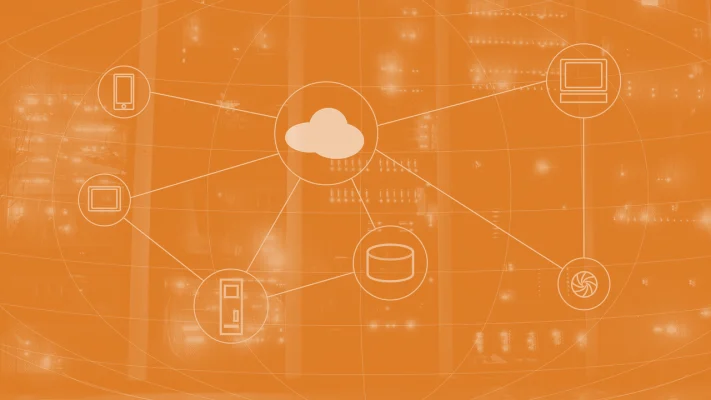When it comes to the industrial sector, the Internet of Things looks very different from how it appears in the consumer world of smart homes or smart offices. The smart sensors that track temperatures on machines in a manufacturing plant are different from the ones in your smartwatch that monitor your heart rate, and they have very different hardware requirements. Namely, they require industrial IoT boards.
Obviously, IoT developers know this, and they need to choose their components accordingly. Some development boards are specifically designed to meet industrial requirements with a whole new level of fast response times, high performance, and low energy usage. For developers, here’s what you need to know about Industrial Internet of Things (IIoT) development boards and their features.
What are Industrial IoT Boards?
An IIoT board includes everything you need to run the simplest form of an IoT device all on one printed circuit board. The board will include a processor, real-time operating system (RTOS), inputs and outputs, so you can configure the board for your specific use case, and so on.
Smart devices that are used in an industrial context need to be able to respond quickly to, say, a proximity alert that means someone might be coming too close to a machine during operation, or a temperature alert that means a machine is in imminent danger of catching fire. Responses need to be near-instant, in fact, and that’s what a real-time operating system (RTOS) does.
What is the difference between industrial and regular IoT Boards?
IIoT boards generally rely on an RTOS for a reason. Unlike a traditional operating system, an RTOS only performs one action at a time so that it can dedicate all its computing power to that specific action.
As a result, it needs less computing power and energy overall, and it can respond quickly to external commands or information from sensors. It does this by assigning tasks a priority and switching between tasks to only perform the most important task at any given time. Naturally, the most important tasks in an industrial setting are going to be safety-oriented tasks, so it’s essential that the RTOS is dependable at all times.
To accomplish that, the development board and its RTOS also need to rely on little energy. After all, if you have a couple thousand IoT devices in your industrial environment, you can’t be switching batteries all the time or having some of the devices run out of power all together at a critical moment.
Another important factor is temperature resilience. Industrial IoT devices may need to operate at very high or very low temperatures. Your smart watch, on the other hand, is probably going to stay pretty close to room temperature at all times, so it doesn’t need to be particularly resilient to temperature changes or extremes.
There’s also a demand in IIoT for high ingress protection (IP) casings. IP refers to an international rating standard that specifies the degree of protection the casing provides against the intrusion of solids and liquids. A higher number means the casing is better protected from water and other substances getting into the inner workings of the device and causing problems. For example, an IP67-rated device is dust-tight and can withstand temporary immersion in water. Industrial IoT devices need to be reliable, so they usually require IP65 or higher.
Of course, there are also different types of IIoT devices. Some may also need location-tracking features for warehouse and supply management systems. Location tracking IIoT devices can help manufacturers keep aware of where all of their supplies, resources, and products are at any given time so nothing gets lost and processes can be made more efficient. Plus, many IIoT devices need to have the capability to collect performance data in real time and send that data along to a central system for processing.
Key features of industrial IoT boards
Industrial IoT boards have certain features to look for and certain aspects that may change depending on what use case you’re planning for.
MCU vs. MPU
A microcontroller unit (MCU) has relatively low computing power and low energy consumption, whereas a microprocessor unit (MPU) requires more power but also has more ability to process larger amounts of data. Say your IoT device is a smart camera that you’re using to monitor product quality or machine performance; you want that device to collect a lot of data to fuel predictive maintenance or give you insights on how to improve your processes. In that case, you might want an MPU instead of an MCU. On the other hand, a vibration sensor for a machine might not require the same level of processing power.
Memory
There are different types of memory in IoT boards. For example, you may be familiar with the concept of random access memory (RAM) from your desktop computer: it refers to temporary memory rather than permanently stored data. Boards can have either static RAM (SRAM) or dynamic RAM (DRAM). SRAM keeps information in memory as long as the device is powered on and only refreshes when powered off. DRAM refreshes constantly, which means it needs less space, but it also requires more power usage.
Connectivity
In a home IoT environment, you don’t need to worry if one device uses bluetooth and another device uses Zigbee or ethernet. It’s not critical to have all your devices standardized and operating on the same communication protocols. But in an industrial environment where you may have hundreds or thousands of IoT devices feeding data into and receiving commands from the same system, the need for standardization becomes much more evident. You want to ensure compatibility between your devices and choose the options that enable the most reliable performance for the IIoT system.
There’s no one size fits all when it comes to IIoT boards, but these are some of the major differentiating factors that will determine your devices’ application in an industrial setting.
Nabto and industrial IoT boards
If low latency and speed are top priorities in IIoT, one of the most important aspects of your IoT system will be ensuring that your connection options can facilitate faster response times. Nabto’s P2P connectivity allows the IoT device to communicate directly with a control device, like a smartphone or computer, without a cloud intermediary. This in turn reduces latency in communication and makes devices more efficient.
Nabto is also easy to get started with, since we provide remote control demo apps suited to use cases like a thermostat app or a P2P video streaming app. The code is open source, so you can easily make tweaks and roll out the apps across your IIoT system as needed.
Wrapping Up
IIoT comes with its own set of requirements and specifications. You have nearly infinite possibilities, so start your research and choose the options that work best for your industrial applications.
Read Our Other Resources
We’ve also published a range of IoT device resources for our community:
- Read about the Top 10 Development Boards for IoT
- Learn about the Top Microcontroller Series for Your IoT Projects
- Read our RTC explainer, which lays out the many benefits of real-time communication for IoT








